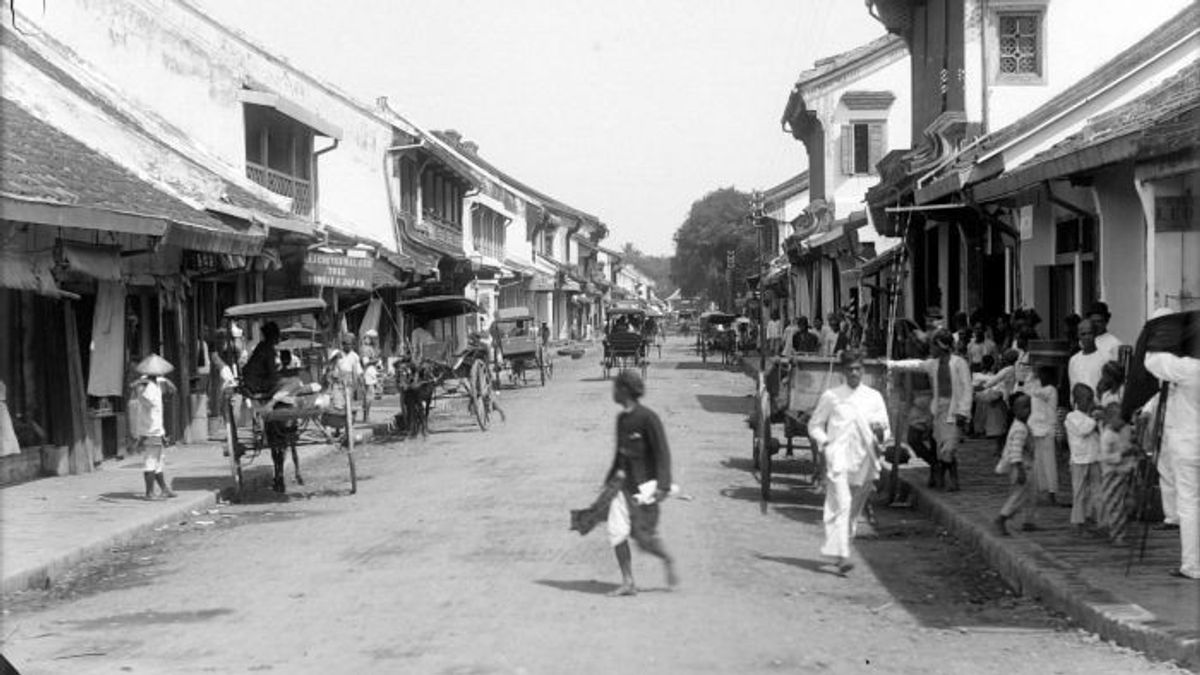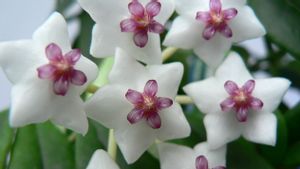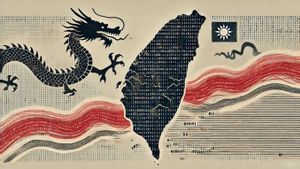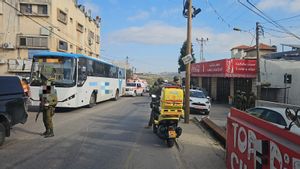JAKARTA - "Leave the hotel, cross one of the Molenvliet bridges, and walk along Jalan Raya Berendracht to the New Church (Nieuwe Kerk), nearby is a large temple, and from Passer-Barhroe to Goenoeng Sahri."
The sentence above is a guide contained in the book Java the Wonderland (1900), a famous travel guide book of its time. This book was written by Batavia Vereeniging Toeristenverkeer in order to break through time in order to enjoy the unique beauties of the Indies (Indonesia) of the past. One of the locations that tourists recommend when they visit Jakarta is Passer-Barhroe, or what is now known as Pasar Baru.
The new market itself is an area that was built in the 19th century, some time after the Governor General of the Dutch East Indies Herman Willem Daendel (1808 - 1811) started a big breakthrough in moving the center of government which was originally in Oud Batavia - Old Batavia or the Old Town Area - to Weltevreden area, the area around the Banteng Field.
By Daendels, Pasar Baru was built deliberately to meet the needs of European and Dutch citizens who were increasingly coming to Batavia. How could it not, at that time, many Europeans had settled around Jalan Rijswijk which is now known as Jalan Veteran, Noordwijk (Jalan Juanda), Pecenongan, to the floodgates.

One of the "China Town" in Batavia
The popularity of Pasar Baru as a business center at that time was confirmed by Achmad Sunjayadi in the book Tourism in the Dutch East Indies 1891-1942 (2019). He said, “In the 19th century guidebook (tourism) compiled by M. Buys, it was stated that our tourists visiting Batavia are advised to visit the Bahroe Market (Pasar Baru), Chinese tombs, temples, and Kampoeng Tjina in Kota Tua. "
In fact, the fame of Pasar Baru as the village of China was also immortalized by the Dutch soldier, HCC Clockener Brousson in Batavia Early 20th Century (2004). He who visited in the early 20th century shared his impression when he visited Pasar Baru.
Brousson immediately caught an interesting sight, a crowd of Chinese residents when he crossed a bridge and briefly saw the Pasar Baru signpost. "People think it is very easy to recognize a Chinese city because the structure of the houses is similar to what is in their home country."
Brousson was so amazed, he then looked at the colorful gevel - the front wall of the building - the shop. Gevel himself, according to the Europeans, was often filled with Chinese secret writings and was written in gold ink.
“But what really caught my attention was the enormous crowd and bustle of the road. Chinese people eat, drink, sell, buy, fight and have enough on public roads. In the middle of the intersection, the pedestrians were busy, coolies shouted, ladies and ladies shopping, there were also sado (horse-drawn carriages) and wagons, "wrote Brousson.

The commercial area is never lonely
The landscape of the Pasar Baru area in the 1920s has changed a lot. Motorized vehicles began to be seen passing by, although it was relatively rare because they were only owned by Europeans or rich natives. At that time, the usual sado and carts were slowly being sidelined.
Senior journalist Alwi Shahab, in his article entitled Pasar Baru in Weltevreden, expressed his view when he saw the photo document of Pasar Baru atmosphere in the 1930s. He himself wrote, “The state of the building is not much different from what it is now. Only a few 1920s Morris and Fiat cars with hoods opened and closed. "
In addition, Alwi Shahab also described the condition of people who come to the new market looking relaxed walking without fear because the traffic is quite relaxed. There were also women wearing batik and kebaya, which were their daily clothes at that time. Others, the men appeared in sarongs, koko shirts, and black caps.
Pasar Baru's fame lasted until 1970. The lack of construction of malls or modern shopping centers is a blessing for Pasar Baru. Interestingly, the trade activity can still be witnessed in Pasar Baru to this day. Although not as busy as before, Pasar Baru is a memory that cannot be separated from Jakarta.
Moreover, Indian shops that have been known as reliable textile sellers since colonial times can still be found. To the extent that, the picture of the textile trader was immortalized by Moctar Lubis in several fragments in his novel entitled Senja di Jakarta (1963).
"And Dahlia took the batik package which she brought from the shop and could be in debt, and she did not know how to pay the debts, or was ordered to pay by Suryono or also by her regular young shop owner, an Indian in Pasar Baru, who had been trying for a long time. try to approach him every time he comes shopping to the store, "wrote the novel.
The English, Chinese, Japanese, Arabic, and French versions are automatically generated by the AI. So there may still be inaccuracies in translating, please always see Indonesian as our main language. (system supported by DigitalSiber.id)








